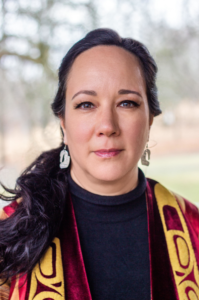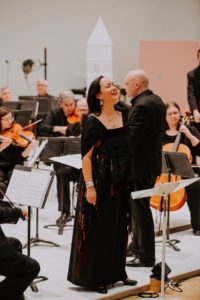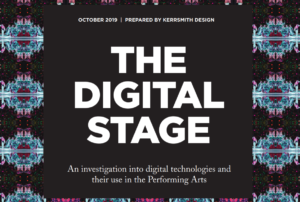While Orchestras Canada serves a national network of Canadian orchestras, our office is on the treaty and traditional territory of the Michi Saagiig Anishinaabeg. We offer gratitude to the First Peoples for their care for, and teachings about, our earth and our relations. We will honour those teachings.
We are grieved by the anti-Black racist events in recent weeks.
We acknowledge that our society is built on, yet critically weakened by, systemic racism.
Orchestras Canada is committed to a more just society for all.
We are committed to sustained and effective action, manifested through our internal practices and our service to orchestras and the music that is shared.
With much to learn, we approach this important work with humility and transparency, guided by colleagues with lived experience. Their guidance is truly a generous gift.
We call on Canadian orchestras to recruit Black people, Indigenous people, and People of Colour in decision-making roles, as board members, lead volunteers, arts workers, and arts leaders.
We call on Canadian orchestras to welcome Black artists, Indigenous artists, and artists of colour to their stages, as conductors, performers, soloists, composers, mentors, and creators.
Until Canadian orchestras are fully welcoming and accessible, Orchestras Canada will encourage orchestras to adopt external strategies and internal practices that will foster an inclusive network of diverse leaders, artists, arts workers, volunteers, and audiences.
At our national conference in 2016, members asked OC to take the lead on commissioning and curating resources to inform Canadian orchestras’ work in inclusion, diversity, equity, and accessibility. Since then, this work has been a focus for us, and has informed our research, knowledge-sharing, and convening practices, along with our nominating and recruitment efforts. The following is a short list of the resources that we’ve developed; more can be found here.
OC Resources
- Re-Sounding the Orchestra, a report by Soraya Peerbaye and Dr. Parmela Attariwala on relationships between Canadian orchestras, Indigenous peoples, and people of colour, published in 2019.
- IDEA Declaration: a sample commitment for Canadian orchestras, by OC’s Equity Committee, published in 2017.
- Perfect Fifth of Diversity, by Daniel Bartholomew-Poyser: five questions your orchestra should answer, published in 2019.
- Inclusive Leadership in Governance, by Cathy Winter, formerly of OnBoard Canada, published in 2019:
Other resources that we have found helpful
- Programming, from the Institute for Composer Diversity
- Organizational responses to the current crisis, from Of/By/For All
- Guidelines for Being Strong White Allies, by Paul Kivel, published in 2006.

 Over the last month OC has convened online meetings with a number of stakeholder groups to exchange information, ideas and to design collective responses to the current shutdown. We have held meetings with orchestra CEOs, youth orchestra leaders, personnel managers, and with groups of marketing and education staff. We’re making plans to continue and expand these meetings. Let us know what you need.
Over the last month OC has convened online meetings with a number of stakeholder groups to exchange information, ideas and to design collective responses to the current shutdown. We have held meetings with orchestra CEOs, youth orchestra leaders, personnel managers, and with groups of marketing and education staff. We’re making plans to continue and expand these meetings. Let us know what you need. Our advocacy committee has been hard at work assessing the best way to approach federal government decision-makers and make them aware of orchestras’ needs. We’ve
Our advocacy committee has been hard at work assessing the best way to approach federal government decision-makers and make them aware of orchestras’ needs. We’ve  So far we have run two surveys that have measured the immediate impact of the COVID-19 shutdowns on our members, and have reported back with some initial insights from our statistician, Steve Smith. This data collection is an ongoing process: while we’re aware that you’re being approached we’ll be collecting and analyzing further data.
So far we have run two surveys that have measured the immediate impact of the COVID-19 shutdowns on our members, and have reported back with some initial insights from our statistician, Steve Smith. This data collection is an ongoing process: while we’re aware that you’re being approached we’ll be collecting and analyzing further data. Jeff Alexander is the President of the Chicago Symphony Orchestra Association. He has overseen the activities of the orchestra’s 125th anniversary season; worked in support of the wide range of education and community engagement program; supported and represented the organization on multiple domestic and international tours; and led a process to develop a new strategic plan for the Association. Prior to his work at the CSO, Alexander worked in senior management roles at the Vancouver Symphony Orchestra and the Cincinnati Symphony Orchestra. He is a former board president of Orchestras Canada.
Jeff Alexander is the President of the Chicago Symphony Orchestra Association. He has overseen the activities of the orchestra’s 125th anniversary season; worked in support of the wide range of education and community engagement program; supported and represented the organization on multiple domestic and international tours; and led a process to develop a new strategic plan for the Association. Prior to his work at the CSO, Alexander worked in senior management roles at the Vancouver Symphony Orchestra and the Cincinnati Symphony Orchestra. He is a former board president of Orchestras Canada. Dale Hedding is the Vice-President of Development at the Chicago Symphony Orchestra. A passionate advocate for arts that inspire, he brings to the organization more than 25 years of leadership experience in arts, culture and education institutions, including successful tenures at the Arts Consulting Group, Baltimore Symphony Orchestra, Atlanta Symphony Orchestra, and the John F. Kennedy Center for the Performing Arts.
Dale Hedding is the Vice-President of Development at the Chicago Symphony Orchestra. A passionate advocate for arts that inspire, he brings to the organization more than 25 years of leadership experience in arts, culture and education institutions, including successful tenures at the Arts Consulting Group, Baltimore Symphony Orchestra, Atlanta Symphony Orchestra, and the John F. Kennedy Center for the Performing Arts. Ryan Lewis is the Vice-President of Marketing and Sales at the Chicago Symphony Orchestra, serving there as a member of the senior management team and leading a department that is responsible for marketing, communications and design, digital content and web technologies, as well as ticketing and patron services. Prior to his current role at the CSO, he held positions with Opera Philadelphia, the John F. Kennedy Center for Performing Arts and Washington National Opera.
Ryan Lewis is the Vice-President of Marketing and Sales at the Chicago Symphony Orchestra, serving there as a member of the senior management team and leading a department that is responsible for marketing, communications and design, digital content and web technologies, as well as ticketing and patron services. Prior to his current role at the CSO, he held positions with Opera Philadelphia, the John F. Kennedy Center for Performing Arts and Washington National Opera.

 The first project the IAC consulted on was the newly created Forward Currents Festival. “Each year the festival focuses on an issue that is socially relevant to our community here in Regina”, says Gordon. The first edition in 2018 focused on Truth and Reconciliation, and the 2019 edition focused on mental health awareness.
The first project the IAC consulted on was the newly created Forward Currents Festival. “Each year the festival focuses on an issue that is socially relevant to our community here in Regina”, says Gordon. The first edition in 2018 focused on Truth and Reconciliation, and the 2019 edition focused on mental health awareness. As of April 13th, 2020, jobs posted on Orchestras Canada’s job board will require remuneration information. This could take the form of:
As of April 13th, 2020, jobs posted on Orchestras Canada’s job board will require remuneration information. This could take the form of: